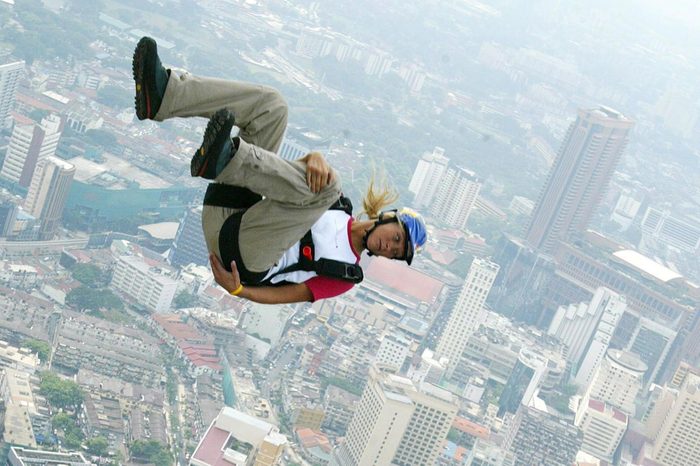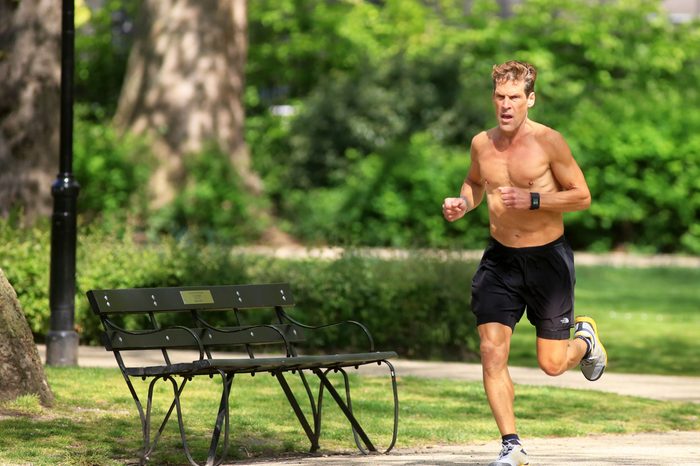You won't believe the amazing feats these real men and women have pulled off

7 People with Real-Life Superpowers


The samurai
With his amazing ability to move a sword with seemingly superhuman speed and accuracy, Japanese Iaido Master Isao Machii holds multiple world records, including the fastest 1,000 martial arts sword cuts and the fastest tennis ball cut by a sword. Even more impressive? When a BB pellet was fired at him at 158 km per hour, he still had time to unsheath his sword and cut the bullet in half in one fluid motion. Now that’s what you call super speed.

The woman who can fly
As a BASE jumper, Norwegian Karina Hollekim leaps off cliffs for a living (talk about real-life superpowers). Wearing what’s known as a wingsuit—a full-length jumpsuit with additional fabric between the legs and under the arms—BASE jumpers “fly” for a couple of seconds before deploying a parachute to slow their fall. Hollekim has made more than 400 jumps, including from the Hand of Fatima, a 2,400-foot rock formation in Mali.

The blind man who can see
Daniel Kish, 53, can’t see with his eyes—he had both of them removed during a childhood battle with retina cancer—but he has so finely tuned his hearing that he can navigate his bike through heavy traffic, climb trees, camp alone and dance fluidly. His “power” is echolocation. To orient himself, Kish clicks his tongue and listens closely as the sound bounces off objects around him and returns to his ears at different volumes. Bats, dolphins and beluga whales use a similar technique, called biosonar, to navigate the ocean.
Kish is so adept at getting around using echolocation that other blind people hire him to help them get around. “That tongue click is everything to me,” says Kish.

The man with the photographic memory
All it took for British artist Stephen Wiltshire to memorize and draw intricate details of the Tokyo, Rome, Hong Kong, Dubai and New York City skylines was a brief helicopter ride over each city. Wiltshire, who is autistic and didn’t speak until age 5 (his first two words were paper and pen), has a highly developed photographic memory—in his panoramic drawing of Rome, he recreated the exact number of columns on the Pantheon.

The man who can withstand freezing temperatures
Using the Buddhist meditation technique Tummo, Dutch daredevil Wim Hof keeps his body temperature steady while enduring extremely cold conditions. Hof, whose feats have earned him the nickname Iceman, has completed several marathons and climbed Mt. Kilimanjaro in sub-freezing temperatures wearing only shorts. He holds 20 cold-endurance world records, including the record for the longest ice bath, at one hour, 13 minutes and 48 seconds.

The man who doesn’t stop running
Dean Karnazes, named by Men’s Fitness as one of the fittest men on the planet, is the real-life version of The Flash—only with better stamina. As an endurance athlete, Karnazes has submitted himself to some of the most physically and mentally grueling athletic tests imaginable. Most notably, he has conquered a 350-mile run without stopping (even to sleep!), a sweltering sprint through the 120-degree heat of Death Valley and a marathon to the South Pole, where temperatures drop to –40 degrees Fahrenheit.
Though Karnazes has already built quite the running resume, he continues to search for new ways to challenge his mind and body. His real-life superpowers include completing 50 marathons—one in each state—over the course of 50 consecutive days. There is simply no stopping those legs!

The French Spider-Man
If you thought the only way to harness the powers of Spider-Man was to endure a radioactive spider bite—think again. Alain Robert, a 54-year-old also known as the “French Spider-Man,” is famous for his spine-chilling feats in urban climbing. Without any safety equipment to keep him from falling, Robert hoists himself hundreds of feet into the sky, scaling multistory buildings in broad daylight. Among his death-defying ascents, Robert has climbed the Eiffel Tower, the Empire State Building, the Canada Square tower, the Petronas Towers in Malaysia and the Four Seasons Hotel in Hong Kong.
Although urban climbing is not technically illegal, Robert has been arrested more than 100 times for trespassing and causing public disturbances. While Robert flirts with death each time he mounts a slippery, sleek building, he takes comfort in knowing he is pursuing his passion—and using his superpowers to do so.
Why trust us
At Reader’s Digest, we’re committed to producing high-quality content by writers with expertise and experience in their field in consultation with relevant, qualified experts. We rely on reputable primary sources, including government and professional organizations and academic institutions as well as our writers’ personal experiences where appropriate. We verify all facts and data, back them with credible sourcing and revisit them over time to ensure they remain accurate and up to date. Read more about our team, our contributors and our editorial policies.
Sources:
- Swords of Northshire: “Who is Isao Machii?”
- YouTube: “Base Jump – Karina Hollekim”
- Men’s Journal: “The Blind Man Who Taught Himself to See”
- Stephen Wiltshire: “Stephen Wiltshire: British Architectural Artist”
- Wimhof Method: “Tummo meditation”
- Ultra Marathon Man: “Meet Dean”
- New York Times: “French ‘Spider-Man,’ Alain Robert, Is Charged for London Tower Climb”



















